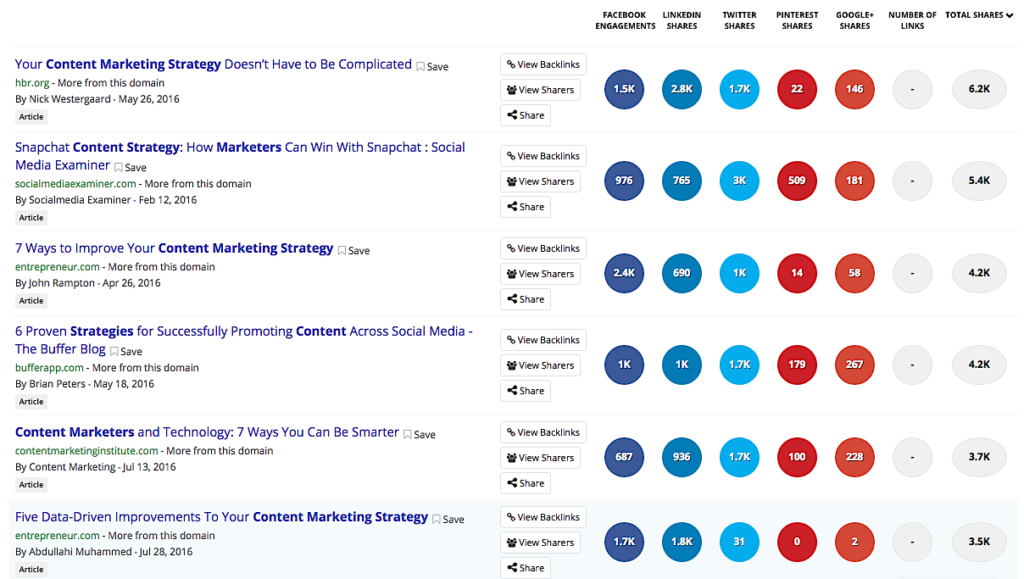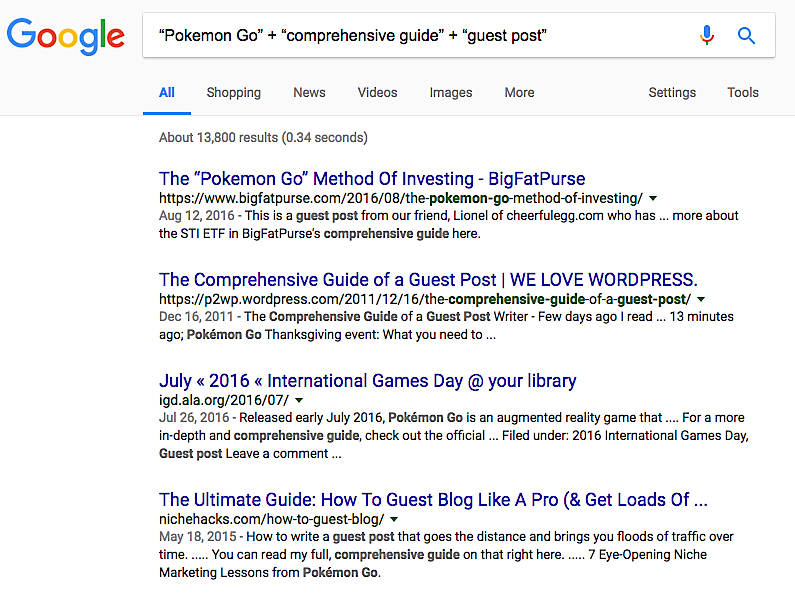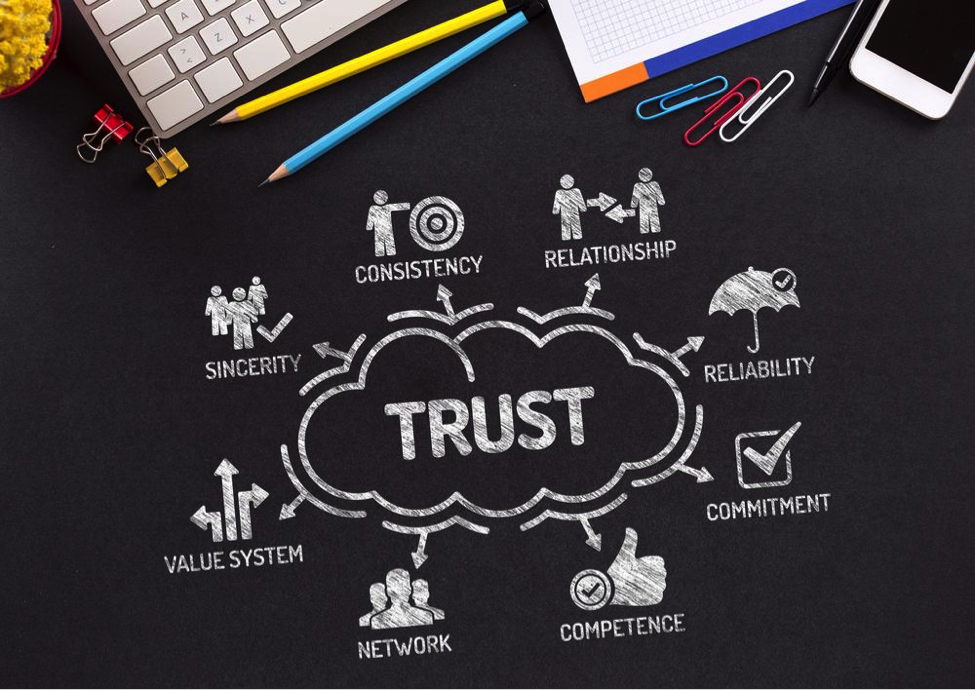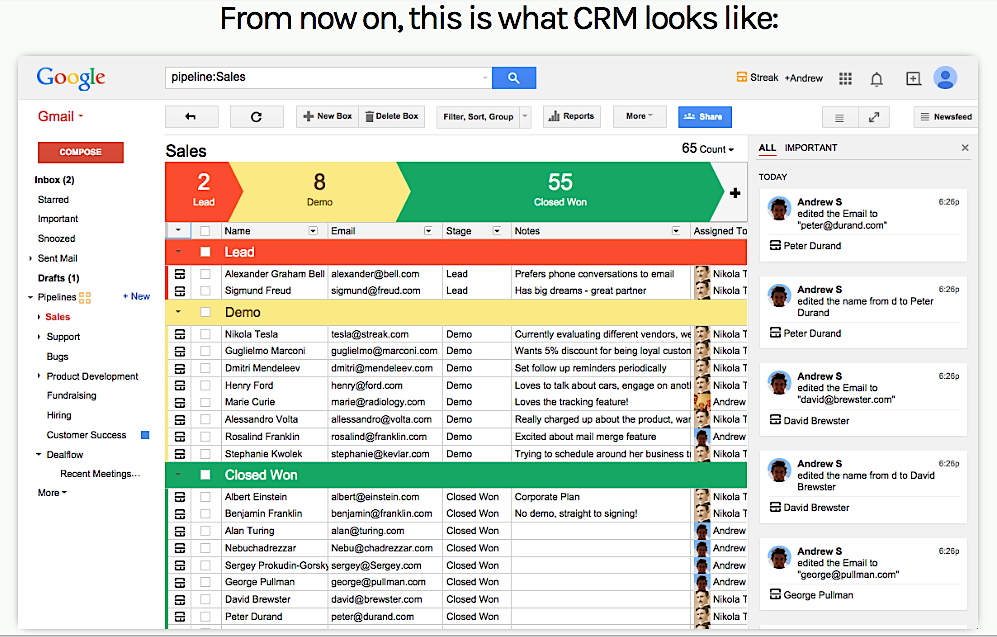Whether you are simply connecting with other bloggers, or reaching out to industry influencers, blogger outreach is essential for amplifying your brand’s content and visibility.
81% of people online trust the advice they receive from bloggers, according to data compiled by BlogHer, and 61% make purchases based on an influencer’s recommendation.
Blogger outreach is not easy; it needs to be done methodically and requires a significant time commitment. But investing in blogger and influencer outreach is a no-brainer. Influencers have a dedicated following, and your blogger outreach efforts ultimately allow your brand access to those followers.
Let’s take a closer look at how you can use blogger outreach to earn links and social shares to boost your brand awareness and profits.
1) Create Truly Exceptional Content
Your blogger outreach attempts will fail unless your content is truly exceptional. Bloggers and influencers will not be interested in amplifying your content unless the content is interesting, relevant and offers true value.
Too many brands are out there creating content for content’s sake. To get bloggers and influencers to engage, you need to spend time at the ideation stage, finding concepts that are truly relevant and creating content that goes far beyond and above what’s available from other sources.
Some great tools to use at the ideation stage are:
- BuzzSumo: Type in your target keywords to see what’s been shared in the media lately around your topics.

- Feedly: Create a curated list of blogs that you can scan when you are brainstorming for topics. Finding the top blogs in an industry and following them on Feedly is a quick and easy way to aggregate the most powerful content in an industry.
Learn More: 7 Tips to Creating Killer Blog Posts that No One Else Is Writing
2) Identify Influencers Using Search Operators
After ensuring that your content is compelling and informative, it’s time to develop a powerful blogger outreach list. There are a variety of ways you can go about creating this influencer database.
You want to identify sites that have similar content to yours, since relevancy will ultimately be an aspect of an influencer’s decision to promote your products or services. Let’s say you are using search operators to identify sites that offer information about Pokemon Go. Use quotation marks around your keywords to narrow your search to exact matches.
You will begin your search with operators such as:
- “Pokemon Go” + in-depth resource
- “Pokemon Go” + “comprehensive guide” + “guest post”
- “Pokemon Go” + “guest author”

Each of these searches will yield a list of sites that you can target in your outreach process.
Once you have a sizable blogger outreach list of potential influencers, you will want to qualify them to narrow it down and maximize your efforts.
3) Qualify Influencers On Your Blogger Outreach List
Your blogger outreach campaign is a long-term commitment. You are not simply connecting for the sake of followers. You are building meaningful relationships for your brand, so you’ll need to qualify the high-authority sites/blogs that you want to connect with by identifying niche, genre and metrics.
Essential blogger outreach elements you should be researching:
- Number of blogs posted weekly on the site
- Page rank of the potential site/blog
- Page’s trustworthiness through trust flow
- Citation flow
- SEMrush rankings
- MozRank
- Average comments per post
- Number of social media followers
- Domain authority
Spend the time to gather metrics for each so that you know your efforts are targeted at the right audience. You don’t want to waste time reaching out to a site with an incredibly low domain authority, or a site that has been penalized in the past. That’s why it’s important to gather several metrics.
For example, simply by looking at the domain authority of a site, you cannot see if it has been penalized. But looking at DA and keywords ranking in Google according to SEMrush can show you where there’s been a penalty, as a site with a high DA and a low number of keyword rankings has been negatively impacted.
Once you have created your list and gathered your metrics, prune your list so you have your final list of targets.
Related Content: How Drip Club Used Influencer Marketing to Get 250K Instagram Followers & Grow the Business 1,000% in 1 Year [podcast]
4) Research and Make Influencer Touch Points
You have now developed a list of potential high-authority sites/blogs that you want to connect with and have qualified them. But what’s next in order to earn links and social shares?
Remember, your blogger outreach campaign is all about developing long-term relationships. Simply e-mailing and asking them to promote your brand will get you nothing but an empty inbox.
Strategy is a vital part of the process, so you should begin researching and making touch points with potential influencers.

Tips to build your blogger outreach relationships:
- Comment on and share their content. Build the relationship by commenting on their posts and sharing their content with your followers.
- Get the right contact. When you begin making touch points, use their name in order to stand out from the spammers.
- Read their blogs! You need to have knowledge of their content beyond just the headline so that you can talk about it with them.
- Compliment their content. After reading their content, you can compliment them, begin a conversation, and ask meaningful questions.
- Pick up the phone. A call to potential influencers will allow you to stand out, especially in the digital era.
If you start by commenting on and sharing their content, they will become familiar with your name before you even send them your first e-mail. If you e-mail them after you’ve retweeted and commented on their blog posts, they’ll have created a connection with you and be more likely to open and answer your e-mail.
Keep in mind that the art of outreach is often a numbers game, and the more outreach you have, the more replies you will get.
Make no mistake about it, you are selling yourself, your brand and the creative content you develop for your blogger outreach campaign. However, this is certainly a different type of sales, and a powerful pitch is vital.
5) Develop a Powerful Pitch
You have several touch points, you have commented on and shared content, and now you have a number of names and e-mails of potential influencers. Putting the “outreach” in blogger outreach is about to get real!
Key elements of a powerful e-mail pitch:
- Transparency is powerful. Sales pitches go directly to trash. Be transparent about what you want from an influencer, and let them know what you have to offer, including page views, social shares and comments. Remember that you are always relationship building.
- Keep it short. Influencers may not have time to read a novel, let alone a long-winded pitch. This is especially true for industry leaders. Short, sweet and concise is best practice.
- Add a personal touch. A personalized pitch is far more likely to get a response than a form letter. You can certainly craft a template pitch, but ensure that you make tweaks to add that personal touch.
- Professionalism paves relationships. An influencer will not risk their reputation on someone who is not professional. Convey confidence, be authoritative and don’t forget about grammar! Poor grammar can kill your blogger outreach efforts.
Do you open spammy-sounding e-mails? Of course not, so keep that in mind when developing your powerful pitch e-mail.
Follow these e-mail pitch essentials to compel influencers to click, read and reply:
- Your e-mail address: Remember transparency? Using a company e-mail can often turn influencers off. It brings up traditional sales pitch emotions that can take your pitch from the inbox to the trash. Gmail is best practice.
- Subject line: Including the target site URL in the subject line creates that personal touch needed to connect. It also emphasizes the relevant factor.
- Body of the e-mail: This is where those key elements of a powerful e-mail pitch take action. Below is a template that you can employ to earn links and social shares.
Hey [First Name],
My name is [Name] and I’m a blogger specializing in [Your Industry/Profession].
Are you still accepting guest posts? If you are, I’d love to submit content for your review.
Here’s some of my relevant published work you may find interesting:
[Link 1]
[Link 2]
[Link 3]
My goal is to become a regular contributor and share my expertise and insight with your audience.
I look forward to hearing back from you soon.
Best wishes,
[Your Name]
[Your Social Profiles]
Related Content: Cold Email Templates that Get Responses
6) Respond, Track, Create Content, Repeat!
After sending out your e-mail pitches, your job is certainly not done. In fact, it’s only just begun.
As we mentioned above, outreach is a numbers game, and for it to work you need to focus on sending out a large volume of e-mails. As the replies start coming in, keeping track of everything can get overwhelming, so set up a strategy to ensure that you follow up with influencers and meet blog deadlines.
If you don’t have a system in place, an inexpensive and easy system to use is Streak. With Streak, you can categorize every e-mail according to the stage that each conversation is in. Here is an example of different stages you can use:
- Pitched. You have sent your e-mail and are waiting for a response.
- Pitch Needs Attention. You received a reply, but need to send more ideas and links.
- Needs Content. Influencer likes your pitch, and the content from your pitch needs to be published.
- Ordered. Here you assign writers, editors and set deadlines.
- To Be Published (TBP). This stage is when you have sent content to the site. Set weekly follow-up reminders.
- Accepted. This is when the target site gives you a publishing date. Set weekly follow-up reminders to ensure that you get a publish date or link.
- Published. The article is published and you earn a link to your site.
- Published No Link. This stage is when an article is published, but no link is earned. Request the link to be added, and set weekly follow-up reminders.
- Rejected. The target site rejects the article.
- Pitch No Reply. This stage is when you hear nothing back for three weeks after pitching.
- Not A Good Fit. This is used when the relationship ends.

Keeping track of your pitches and following the process is invaluable. You will be able to stay on top of your pitches, earned links, and continue to nurture your blogger outreach relationships without dropping conversations.
7) Share on Social!
Finally, when you’ve gone through the process of sharing your content with influencers and getting it published, don’t forget to share and promote on social media. If you can, set aside a budget to amplify it on Facebook or Twitter.
Everyone’s goal is to increase visibility, and if you set aside a budget to promote the content shared on their site about your brand, the bloggers and influencers that you work with will be thrilled at the visibility that working with you has gained them.
Conclusion
Blogger outreach has in many ways replaced traditional PR efforts. And if you’re not using blogger outreach in your marketing strategy, your brand is simply missing out.
How do you begin a blogger outreach campaign? Persistence, research, creative content, and a passion for your influencer’s interests will get you in the door. Developing meaningful relationships over time will be the biggest reward for your brand!



